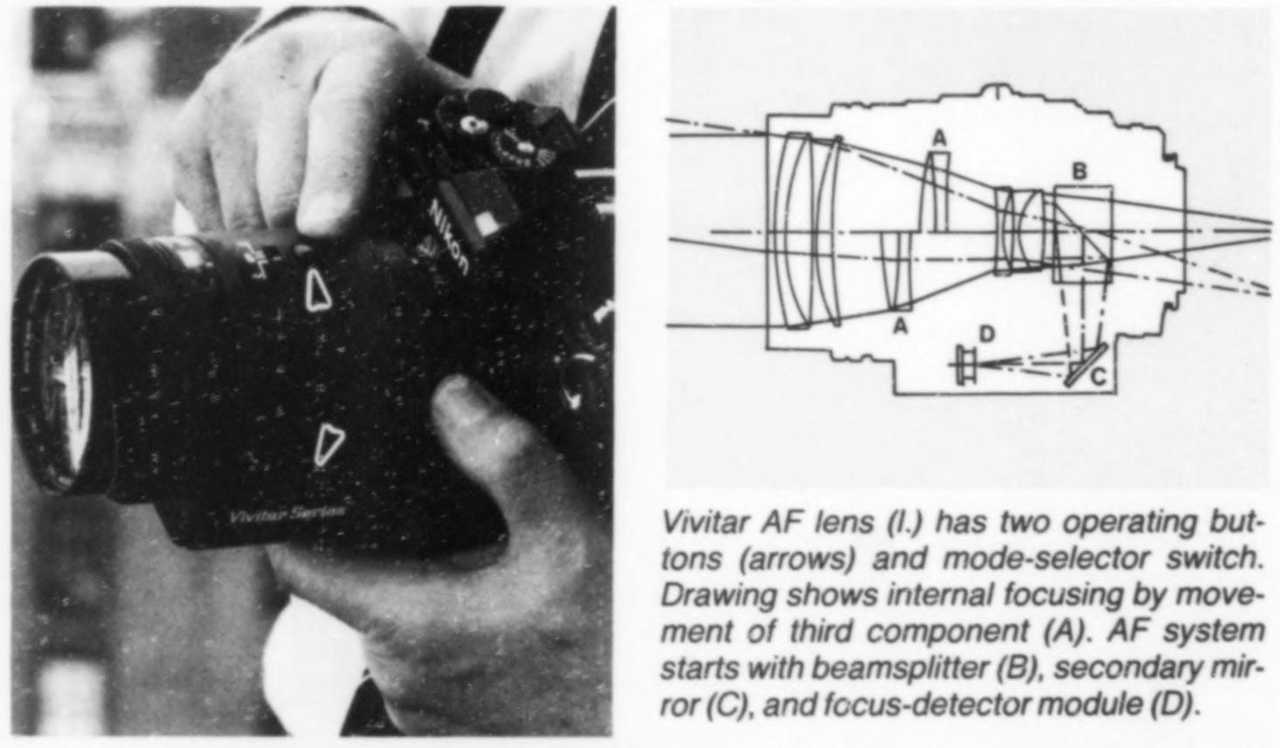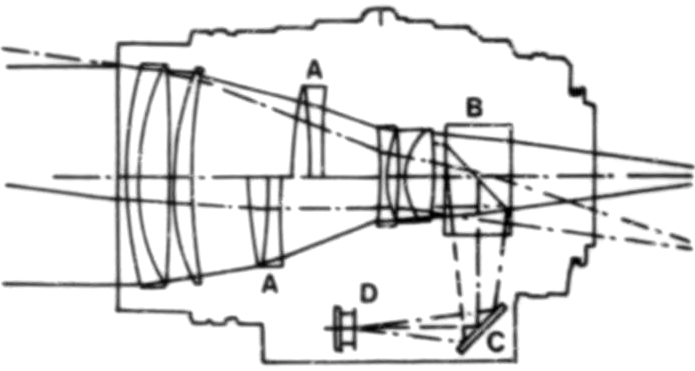Ching-Kuang Shene
New member
- Messages
- 0
- Reaction score
- 0
Here is a list of the so-called self-contained autofocus lenses. Please keep in mind that if the lens does not have a battery chamber, it is unlikely that that lens can be used alone because power would be supplied by the camera body. In this way, Nikon's 85mm and 200mm are out immediately because the power is supplied from the camera body. This approach has its advantage though. If the Nikon F3AF prism is used on a typical non-AF F3 body, all Nikon AI and AIS lenses can be used with AF confirmation! This means the AF sensor is built into the removable prism.Hello.. thanks very much for this insightful post.. I think this opens many possibilities with crop factor cameras MFT, Nikon1 and Pentax Q. Esp for Pentax Q as it does not have any native lenses >45mm with AF capabilities. I am also envisioning auto focus enabled spotting scopes / telescopes using these... perhaps the first of its kind. I am curious if there are any other such self contained auto focus systems / lenses out there in the past? The non-Vivitar ones above in your post, I am assuming, will need to be tethered to the respective camera systems for AF to work. I would conjecture it would have to be some manufacturer with huge lens business but negligible camera presence in the 80s. Who fits this bill apart from Vivitar- maybe Tamron? Any others? Thanks.
However, even the lens has a battery chamber it may not be self-contained because the AF sensor is in camera body. The following shows the Pentax AF 35-70. It is clear that the battery chamber, which requires 4 AAA batteries, is in the bottom of the lens.

Pentax AF Zoom 35-70mm 1:2.8
It is not a self-contained lens, because the sensor is inside the camera. A second mirror below the main mirror reflect the incoming light to the AF sensor for AF.

AF sensor inside the camera body (of a Pentax ME-F)
The following is a list of self-contained AF lenses. This means that on each lens the user can push a button to activate the AF sensor on the lens to auto-focus.
This is perhaps the world's first self-contained AF lens: Canon FD 35-70mm 1:4 AF

Canon FD 35-70mm 1:4 AF
I could not find my Chinon 50mm f/1.7 AF in my collections. So I use an old image:

Chinon 50mm 1:1.7 AF
Chinon also offered a 35-70mm autofocus lens as shown below. Both Chinon lenses used infrared for AF and were not very accurate.

Chinon AF 35-70mm 1:3.3-4.5
Then, we have the Nikon F3AF and Olympus. As mentioned earlier, because the two Nikon AF lenses, 85mm and 200mm, were not self-contained, I will not included them here. Note that both Nikon lenses were very very good, in fact better than all other AF lenses in the same era. Here is the Olympus 35-70mm 1:4 AF. Yes, it is a self-contained lens.

Olympus 35-70mm 1:4 Autofocus Lens
The next, which is the precursor of modern AF DSLR systems, is the Pentax 35-70 1:2.8. It is not self-contained as mentioned earlier, and its image quality is rather not satisfying. So, let me skip it here.
Vivitar and Tamron were late comers. In addition to the Series 1 200mm f/3.5 lens, Vivitar released a pair of self-contained AF lenses: 28-70mm and 75-200mm. Note that both Vivitars were self-contained AF lense. However, the AF motor of these lenses were not of high quality and you may have difficulty to find working ones. Moreover, the Canon versions had poor aperture mechanism, which could break fast. This is especially true for the 28-70,

Vivitar 28-70mm 1:3.5-4:8

Vivitar 75-200mm 1:4.5
There was one AF Tamron in this era: Tamron AF 70-200 1:4. The following image shows this lens with an adaptall-2 to NEX adapter.

Tamron AF 70-210 1:4 with an AdaptAll-2 to NEX adapter
In addition to Nikon's 85mm and 200mm, these are the early AF lenses that I have in my collections. Frankly speaking, none of them can provide an accurate AF results, and each and every one is slow.
There are other self-contained AF lenses with different brand names. Please use the shape of each lens to make a judgment because I do believe that in the early stage of AF not many self-contained AF lenses were available. However, I am very interested in learning more about this early AF technology.
TIA.
CK
PS: As for scopes. You may find many adapters that can transform a lens for 35mm cameras to a telescope of 10X power. I have branded adapters such as Minolta as well as cheap and not-so-good ones such as Cambron. Just a remindar, AF speed is slow to very slow.


